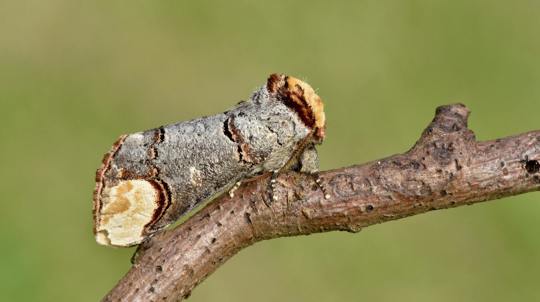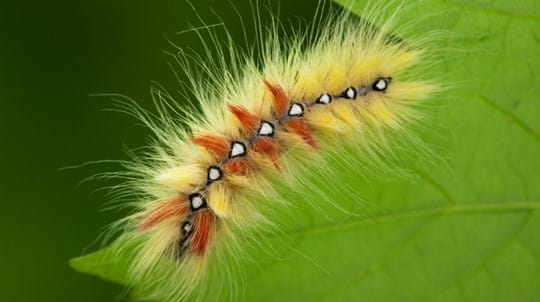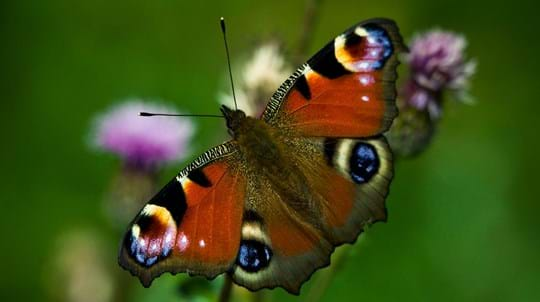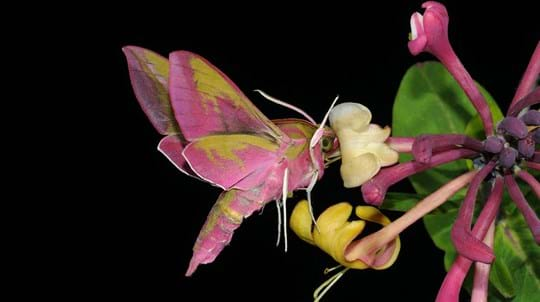Create a wildlife haven in your garden
Help support pretty pollinating insects like butterflies and moths with garden trees rich in nectar and leafy forage.
Buy trees
Digital Content Manager
They both have wings and antennae and start life as caterpillars – so what exactly is the difference between a butterfly and a moth?
The truth is, there isn’t a straightforward answer. There are, however, a couple of rules of thumb that will help you tell the difference between a butterfly and a moth while you’re out and about in the woods.
Together, moths and butterflies make up the order of insects called Lepidoptera.
There are two key features that can help you work out whether you're looking at a butterfly or a moth.
The one sure way to decide whether you’re looking at a butterfly or a moth is to look at its antennae. Butterfly antennae are usually very thin and topped by a ‘club’ – UK butterflies never have thick or feathery antennae. Moth antennae, on the other hand, don’t have this club and are usually thicker. Male moths of some species including the pale tussock, emperor moth and December moth have some truly impressive feathery antennae.
There are some exceptions to the rule. Some moth species, like burnet moths, have antennae that look more butterfly-shaped, but they still lack the butterflies’ distinctive club-shaped tip.
Butterflies and moths tend to hold their wings in different ways when they’re resting. Butterflies normally fold them closed, while most moths rest with their wings open.
Again, there are exceptions to the rule. Some butterflies like basking with their wings outstretched on warm, sunny days; while some moth species, like thorn moths (including the canary-shouldered thorn and lunar thorn) rest with their wings vertically or at an angle.
Help support pretty pollinating insects like butterflies and moths with garden trees rich in nectar and leafy forage.
Buy treesThere are lots of myths about moths that people use to separate them from butterflies, when in fact, they’re incredibly similar insects. Some even share the same name – like the swallowtail butterfly and swallow-tailed moth, or the brimstone butterfly and brimstone moth.
Here are some misconceptions about moths – and the surprising facts.
Compared to the 60-or-so species of butterfly in the UK, we have around 2,500 species of moth, and their diversity is staggering. Some of them certainly are bigger than butterflies – our largest resident moth, the privet hawk-moth, has a hulking great wingspan of up to 120mm, while our biggest butterfly, the swallowtail, has a wingspan up to 90mm.
We also have some very tiny moths, with our smallest measuring in at just 3mm. This is positively miniscule compared to our smallest butterfly, the small blue, which has a wingspan of around 30mm.
This moth myth couldn’t be further from the truth. The UK’s moths come in a stunning array of colours and patterns, from the pink and green candy-striped elephant hawk-moth and the deep-red ruby tiger to the shimmering, gold-dusted burnished brass. Even the brown moths are beautiful, with subtle markings and incredible camouflage.
More and more studies are discovering that moths are more efficient pollinators than bees. As well as larger moths being able to carry a more substantial amount of pollen on their hairy bodies, they:
Moths also pollinate some of our favourite food crops, including peas, strawberries and radishes. In June 2023, the University of Sheffield even revealed that moths account for a third of all pollinator visits to crops, flowers and trees in urban areas.
Though most moths fly at night, around 130 macro-moths (the grouping of our larger species) fly during the day instead. That doesn’t include the countless day-flying micro-moths (the grouping of our tiny species).
The day-flying moths you’re most likely to see are the unmistakable cinnabar moth, five-spot burnet moth and six-spot burnet moth. Others include the migratory hummingbird hawk-moth, the spectacular male emperor moth (females fly at night), and the Mother Shipton moth, which has the outline of a witch’s face etched onto its wings.
Of the 2,500 moths that live in the UK, just a few species are tiny clothes moths. And it isn’t the moths themselves that eat clothes – it’s their caterpillars.
Clothes moth caterpillars have some preferences when it comes to what they eat, so if you’re worried about your clothes, bear in mind that these moths:

Help support pretty pollinating insects like butterflies and moths with garden trees rich in nectar and leafy forage.
Buy trees
Blog
Amy Lewis • 02 Jun 2021

Blog
Amy Lewis • 22 Jul 2019

Blog
Charlotte Varela • 11 Aug 2023

Blog
Danielle Wesley • 13 Mar 2020

Blog
Julia Lock • 09 May 2022